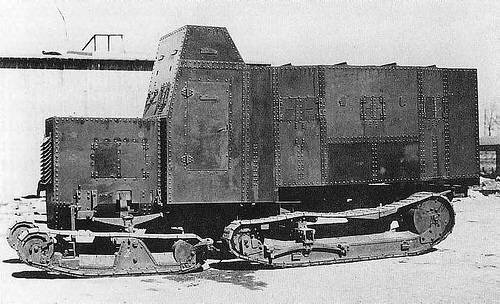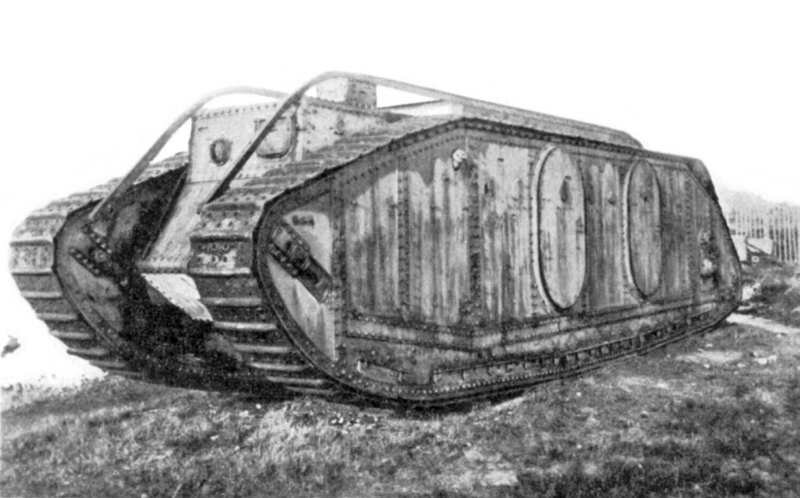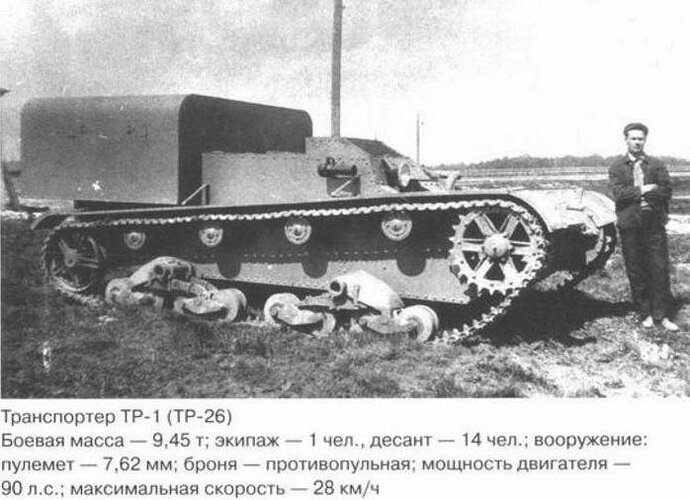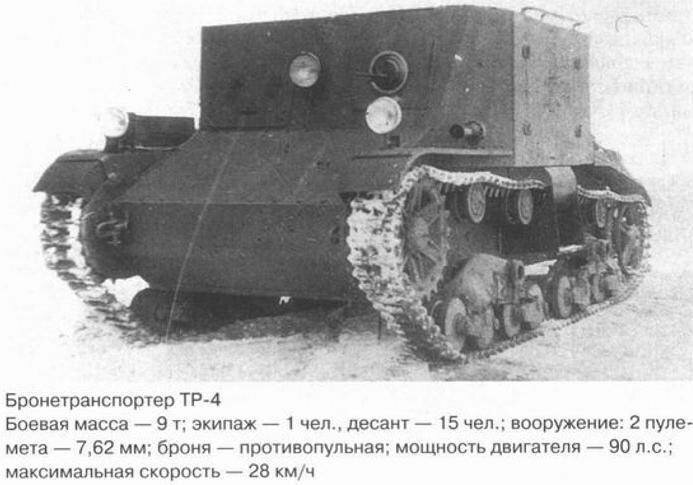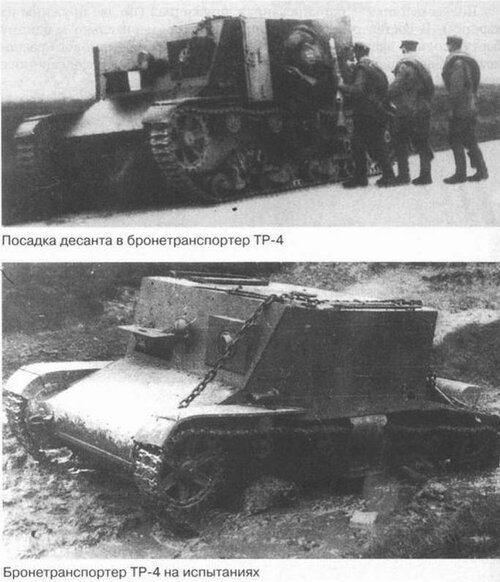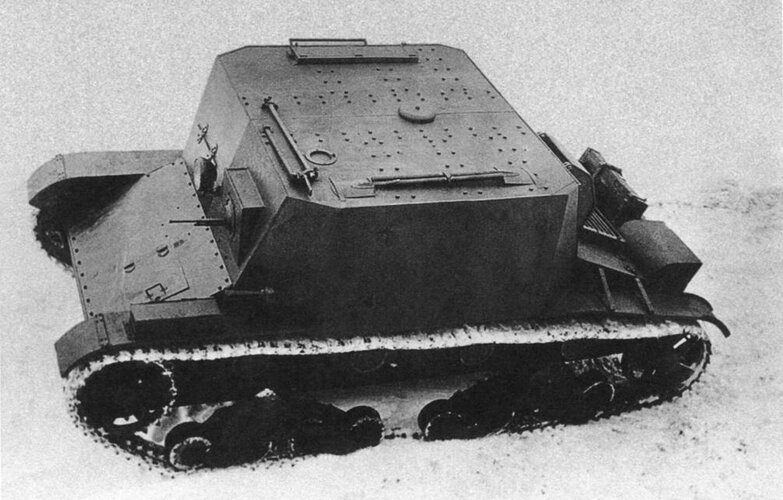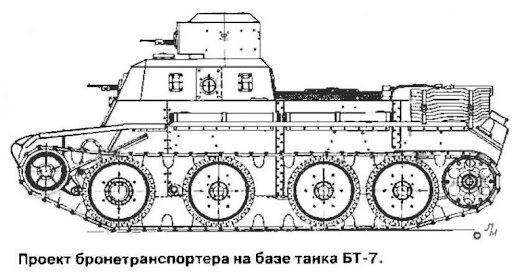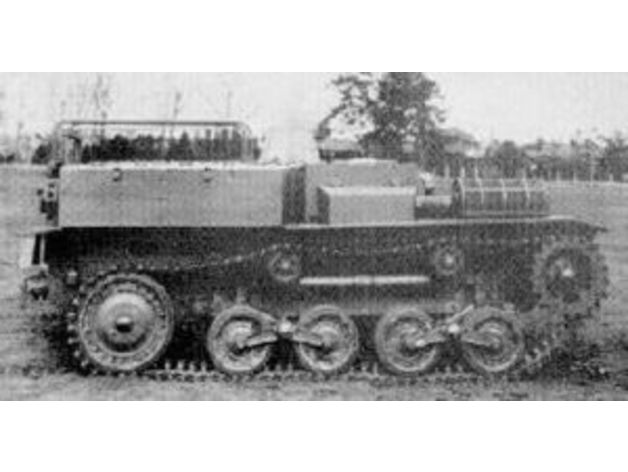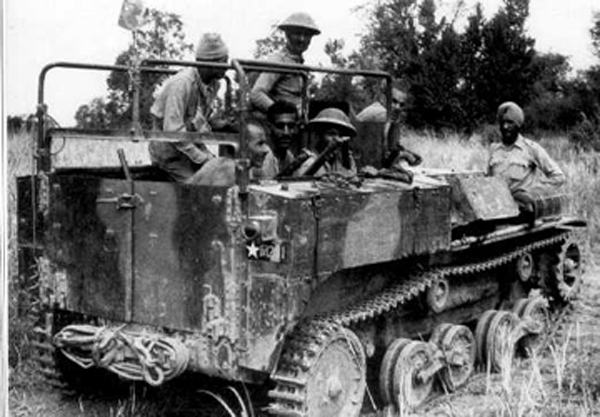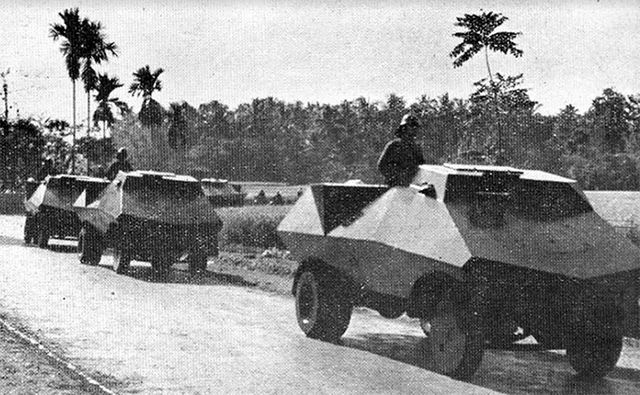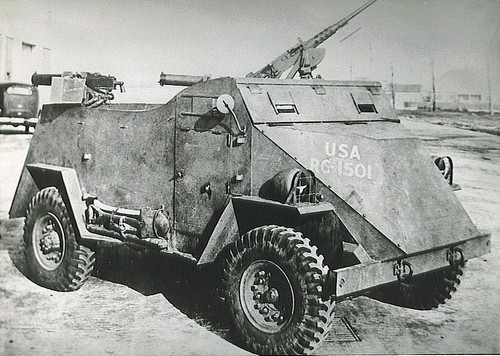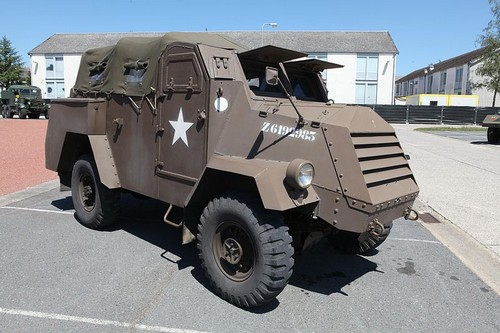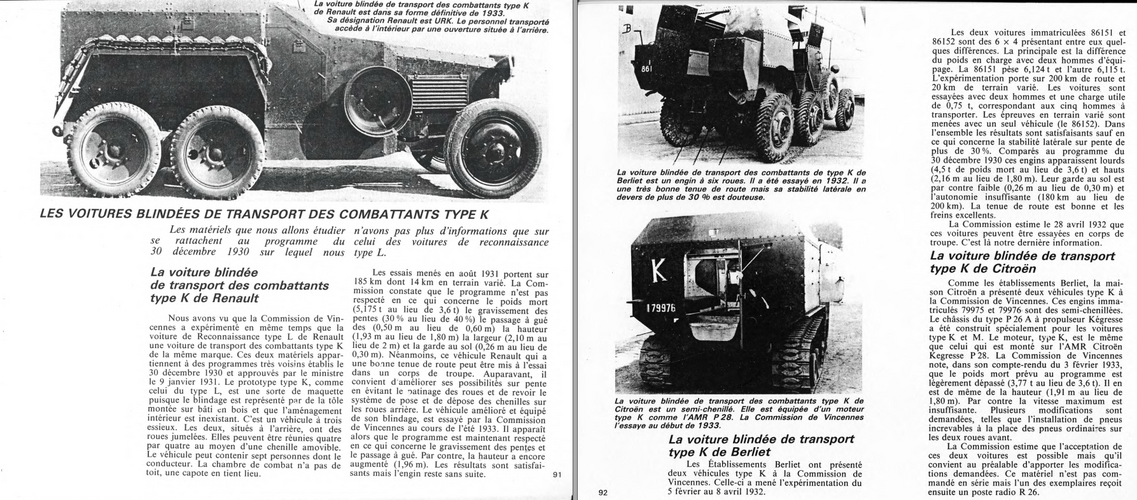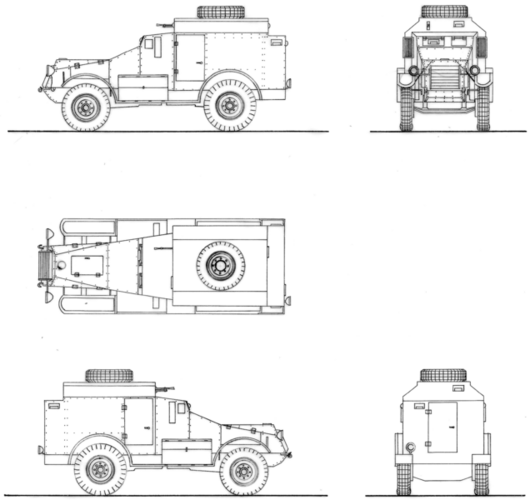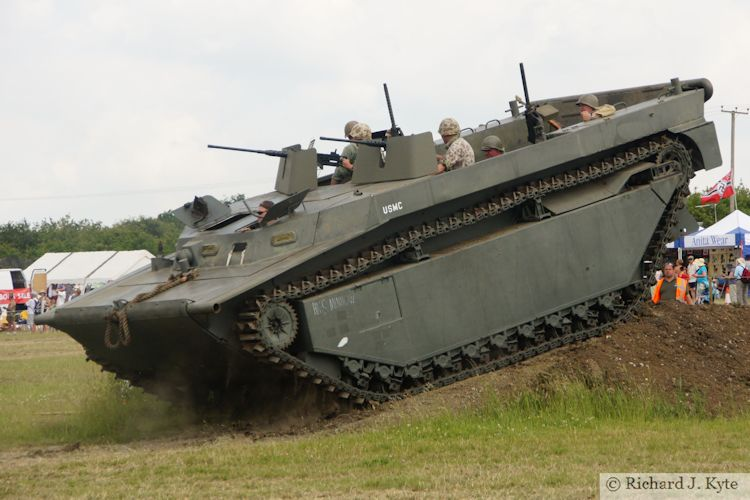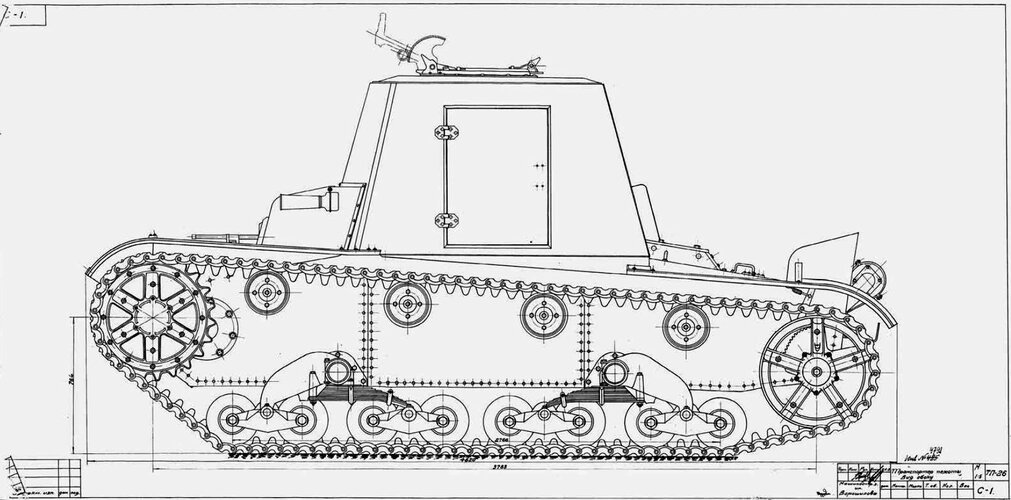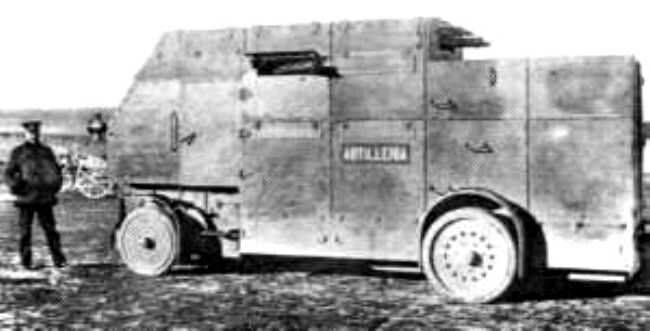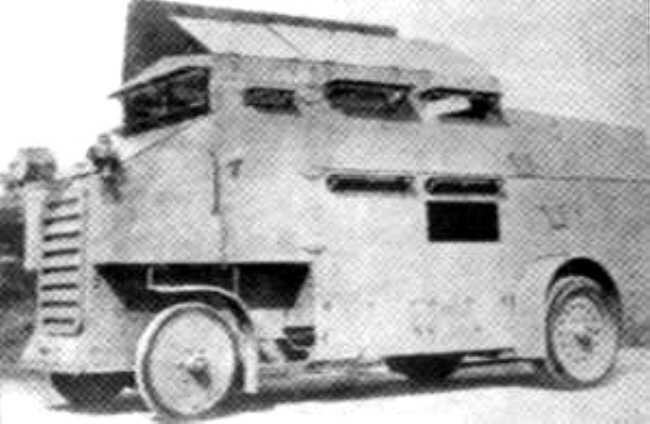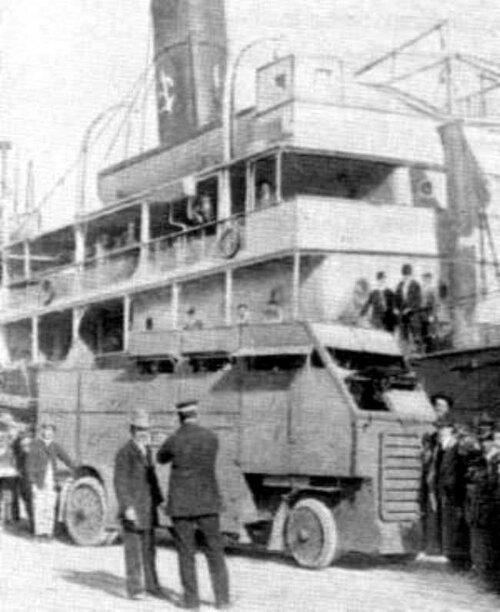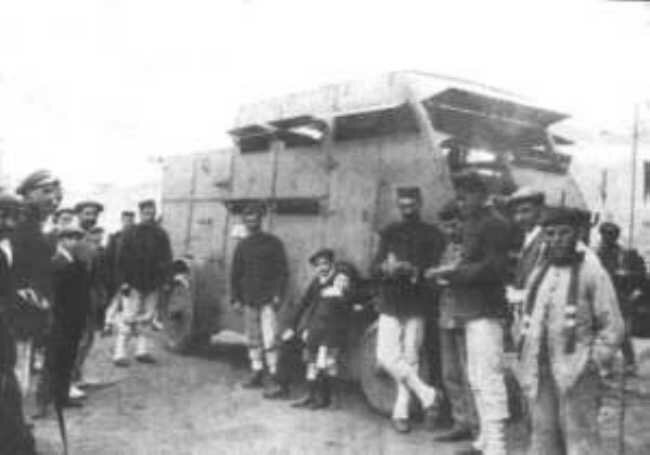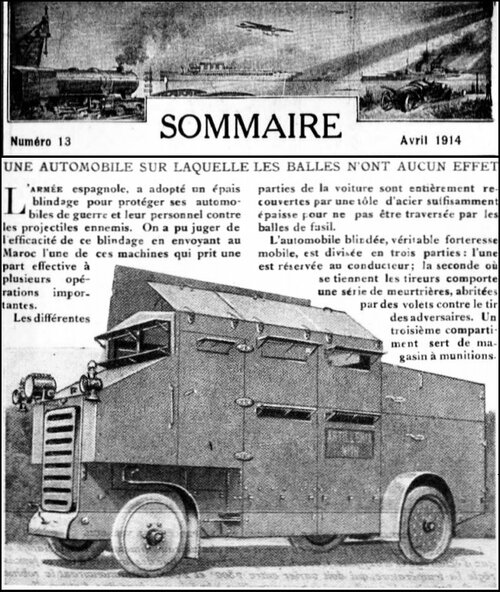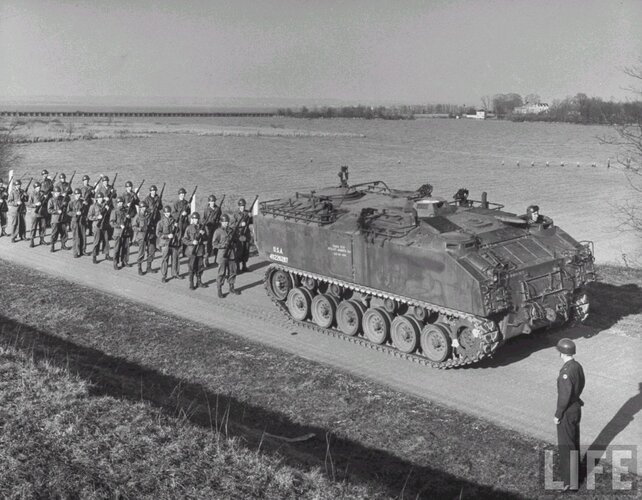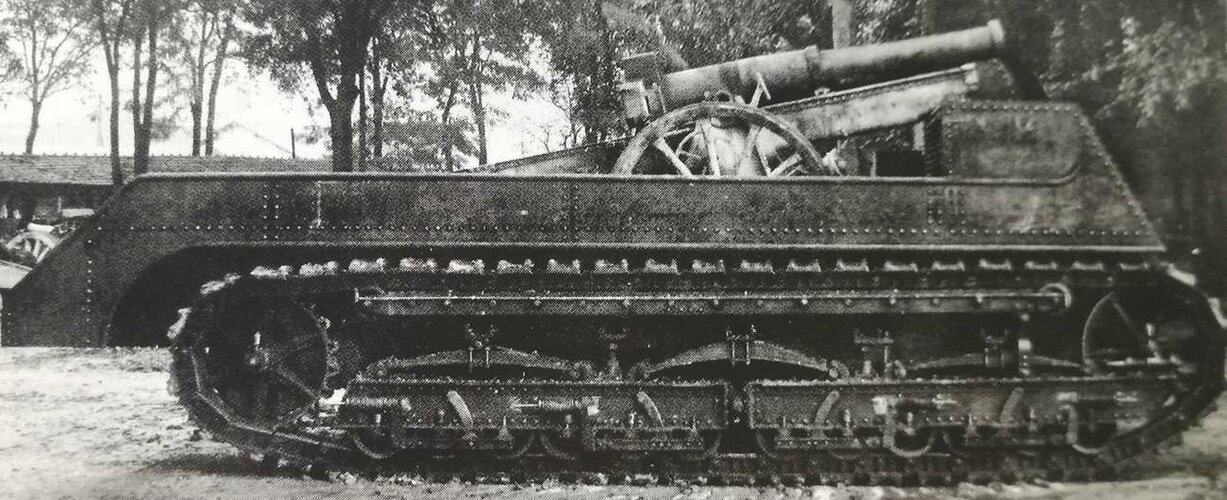You are using an out of date browser. It may not display this or other websites correctly.
You should upgrade or use an alternative browser.
You should upgrade or use an alternative browser.
APCs before the end of WW2.
- Thread starter SirCoutin
- Start date
- Joined
- 11 March 2012
- Messages
- 3,016
- Reaction score
- 2,699
During the summer of 1944, massive infantry casualties forced the Canadian Army to convert a bunch of M7 Priests and Ram tanks to improvised APCs. They first saw battle during August 1944.
The "de-frocked" M7 Priests had "shot-out" their barrels, but were otherwise in good shape. RCEME welded steel plates over the gun slots. When they ran low on salvaged steel plate, they welded on two thinner plates and filled the gap with sand.
The Canadian-built Ram tanks had been used for training in the UK, but were replaced by M4 Shermans before the Normandy invasion. Some had already been converted to artillery O.P.s with steel roofs and extra radios. The bulk of Ram/Kangaroo APCS just had their turrets removed and some internal stowage relocated. When Ram/Kangaroos were used to transport ammo, they were referred to as Wallabies.
At the end of the war, all these ad hoc APCs were left in depots in Holland.
The "de-frocked" M7 Priests had "shot-out" their barrels, but were otherwise in good shape. RCEME welded steel plates over the gun slots. When they ran low on salvaged steel plate, they welded on two thinner plates and filled the gap with sand.
The Canadian-built Ram tanks had been used for training in the UK, but were replaced by M4 Shermans before the Normandy invasion. Some had already been converted to artillery O.P.s with steel roofs and extra radios. The bulk of Ram/Kangaroo APCS just had their turrets removed and some internal stowage relocated. When Ram/Kangaroos were used to transport ammo, they were referred to as Wallabies.
At the end of the war, all these ad hoc APCs were left in depots in Holland.
Colonial-Marine
UAVs are now friend, drones are the real enemy.
- Joined
- 5 October 2009
- Messages
- 1,204
- Reaction score
- 724
Given how often the Soviets had their infantry ride on their tanks even during assaults I've got to wonder why they didn't do a simple "kangaroo" job of some T-34s. The infantry in them would be a lot less vulnerable to MGs and small arms and artillery that isn't air bursting.
- Joined
- 27 March 2006
- Messages
- 1,796
- Reaction score
- 1,313
The Soviets did experiment with a limited run of a converted variant of the BA-64 armoured car, but they had access to the M3 half-track and armoured car for APC use. Use of these, as well as inspection and ad hoc use of the Sdkfz 251 led to the development of the Btr 40 and 152 immediately after WW2.
Bottleship
ACCESS: Secret
- Joined
- 30 June 2019
- Messages
- 472
- Reaction score
- 1,180
During the First World War in Russia, the inventor Konovalov proposed to make armored transporters on the basis of 3- and 5-ton trucks, having chromium-nickel armor with a thickness of 4 and 6 mm, armament from a machine gun in the front turret, embrasures for firing rifles, wheels with metal discs covering spokes, and with a doubled width of the supporting surface, for the transport of 20 people. Engineer Poplavko built several armored vehicles based on the Jeffrey Quad truck, capable of carrying up to 10 people armed with Mauser C96 pistols, grenades and daggers.
During World War II, several armored personnel carriers, B-3, TB-42, BA-22 and others were developed in the USSR, but they were all rather weak because they were based on Soviet trucks that did not have sufficiently powerful engines (during the First World Bobrovsky believed that a 1.5-ton truck should have a 65-horsepower engine and a speed of over 100 kmph, the most massive Soviet 1.5-ton truck GAZ-AA had only 40 hp and a speed of 70 kmph). In 1941, on the eve of the German attack on the USSR, the development of wheeled and tracked transporters was ordered. In the 30s, there were experiments with different transporters based on the T-26 and BT tanks. During the war, the USSR could not afford to produce such equipment, it could not even supply the army with trucks and tractors. It is curious that it was the shortage of armored personnel carriers that served as a reason for the military to abandon reactive armor from 1929 (the first project in the USSR) to 1965, because the infantry rode tanks, and reactive armor was considered dangerous for soldiers (although this sounds more like a strange excuse, but perhaps the real reason was that the USSR had a rather limited production of explosives, even with supplies from the United States and Britain, it could not provide the army with shells and bombs).
BA-64E:
BA-22:
B-3:
During World War II, several armored personnel carriers, B-3, TB-42, BA-22 and others were developed in the USSR, but they were all rather weak because they were based on Soviet trucks that did not have sufficiently powerful engines (during the First World Bobrovsky believed that a 1.5-ton truck should have a 65-horsepower engine and a speed of over 100 kmph, the most massive Soviet 1.5-ton truck GAZ-AA had only 40 hp and a speed of 70 kmph). In 1941, on the eve of the German attack on the USSR, the development of wheeled and tracked transporters was ordered. In the 30s, there were experiments with different transporters based on the T-26 and BT tanks. During the war, the USSR could not afford to produce such equipment, it could not even supply the army with trucks and tractors. It is curious that it was the shortage of armored personnel carriers that served as a reason for the military to abandon reactive armor from 1929 (the first project in the USSR) to 1965, because the infantry rode tanks, and reactive armor was considered dangerous for soldiers (although this sounds more like a strange excuse, but perhaps the real reason was that the USSR had a rather limited production of explosives, even with supplies from the United States and Britain, it could not provide the army with shells and bombs).
BA-64E:
BA-22:
B-3:
The "de-frocked" M7 Priests had "shot-out" their barrels, but were otherwise in good shape. RCEME welded steel plates over the gun slots.
More complicated than that. The Priests had been issued to the Field Artillery Regts of 3rd British and 3rd Canadian Divs as assault divisions ahead of D-Day. It was not meant to be permanent.
More on the background to the changes here
Priests and 25 pounders in Normandy
Hi all, I am just reading about Totalize and the Priests that were converted into infantry carriers. At the time the Priests were being pulled out to...
 ww2talk.com
ww2talk.com
And on the Kangaroos (one of several threads about them on that site)
Number of Kangaroos by type?
Are there any figures for the number of Kangaroos created by converting for instance Priests vs Rams?
 ww2talk.com
ww2talk.com
There were Sherman and Priest Kangaroos in Italy In 1944/45 and Churchill Kangaroos postwar.
Bottleship
ACCESS: Secret
- Joined
- 30 June 2019
- Messages
- 472
- Reaction score
- 1,180
tom!
ACCESS: Confidential
Hi.
Some japanese stuff of WW2:

Type 1 Armored Halftrack Ho-Ha

Type 1 Armored Transport Ho-Ki, mainly used as ammunition carrier in gun tank units but also as troop transporter

Type 95 Armored Railway Car So-Ki, used as towing and transport vehicle for railway engineers. It had a dual drive to change between tracks and railway wheels with variable gauge.
Yours
tom!
Some japanese stuff of WW2:
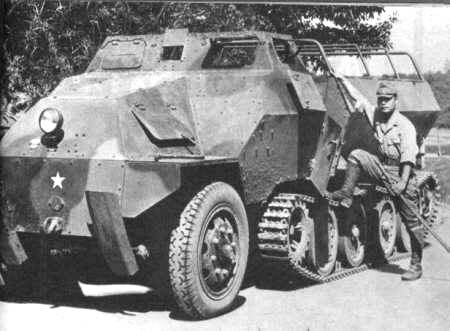
Type 1 Armored Halftrack Ho-Ha
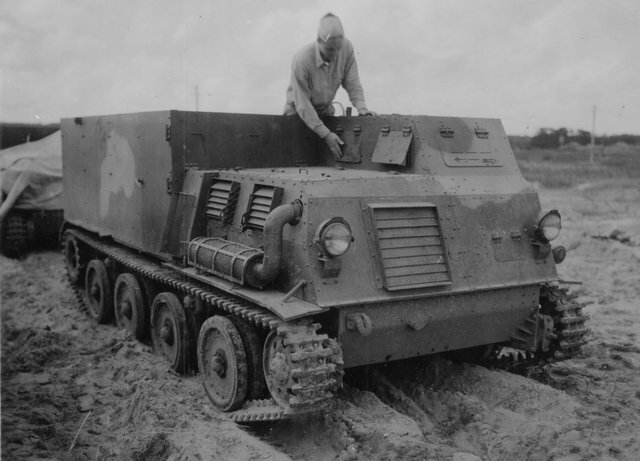
Type 1 Armored Transport Ho-Ki, mainly used as ammunition carrier in gun tank units but also as troop transporter
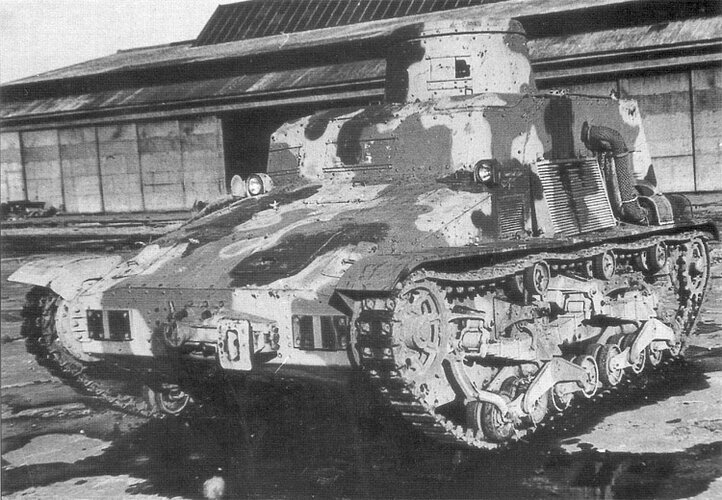
Type 95 Armored Railway Car So-Ki, used as towing and transport vehicle for railway engineers. It had a dual drive to change between tracks and railway wheels with variable gauge.
Yours
tom!
Last edited:
BB1984
I really should change my personal text
- Joined
- 21 August 2011
- Messages
- 121
- Reaction score
- 185
The US also fielded the M39 Armored Utility Vehicle, based on the chassis of the M18 tank destroyer. They built/converted about 650 between October 1944 and March 1945 and used them heavily in both WWII and Korea, where their mobility was appreciated but lack of overhead cover was not (particularly in Korea).
Post WWII, it was developed into the very large M44 APC (carried 24 troops!). The US decided this was to big, and dropped the design, though it was developed for a limited production run as the T17 Command Post Vehicle (or Tactical Air Control Party Vehicle) for the US Air Force, which used them for FACs in Korea. While the M39/M44 path didn't work out, it showed the way for the US to go down the M75 - M59 - M113 path that served the US for quite some time.
A few M39 persisted with the Bundeswehr's Panzergrenadiers, as interim APC, until 1960.
Post WWII, it was developed into the very large M44 APC (carried 24 troops!). The US decided this was to big, and dropped the design, though it was developed for a limited production run as the T17 Command Post Vehicle (or Tactical Air Control Party Vehicle) for the US Air Force, which used them for FACs in Korea. While the M39/M44 path didn't work out, it showed the way for the US to go down the M75 - M59 - M113 path that served the US for quite some time.
A few M39 persisted with the Bundeswehr's Panzergrenadiers, as interim APC, until 1960.
tom!
ACCESS: Confidential
Hi.
The Type 98 Armored Carrier So-Da was rated as protected battlefield ammunition carrier and not really suitable for personell transport. So I wouldn´t call him an an APC even if it could carry soldiers like any other truck, too.
Yours
tom!
The Type 98 Armored Carrier So-Da was rated as protected battlefield ammunition carrier and not really suitable for personell transport. So I wouldn´t call him an an APC even if it could carry soldiers like any other truck, too.
Yours
tom!
Volkodav
I really should change my personal text
- Joined
- 28 March 2014
- Messages
- 652
- Reaction score
- 1,090
I wonder if the Crusader Gun Tractor could have made a viable APC? Delete the ammunition stowage to provide more room for troops and their equipment and it could have proven superior to the various Kangaroos actually deployed.
Another thought is the what about the M-3 Medium and the Churchill Kangaroos with their side doors?
Another thought is the what about the M-3 Medium and the Churchill Kangaroos with their side doors?
But a whole lot less reliable mechanically.I wonder if the Crusader Gun Tractor could have made a viable APC? Delete the ammunition stowage to provide more room for troops and their equipment and it could have proven superior to the various Kangaroos actually deployed.
Try getting a whole infantry squad in full kit through one of them holes tout suite! Might be a bit of a problem. When the Churchill was converted postwar, they still went over the top.Another thought is the what about the M-3 Medium and the Churchill Kangaroos with their side doors?
T. A. Gardner
ACCESS: Top Secret
- Joined
- 18 February 2021
- Messages
- 894
- Reaction score
- 1,532
Late in WW 2 the Germans experimentally built the Kätzchen (Kitten) APC. There were two versions tested. This is the one on the Pz 38d chassis. Yes, there is a d (German) version of that hull with sloped sides behind the road wheels, making it slightly wider.

There is also the Auto Union version built on an E series chassis

Both were still open topped and designed to carry 8 or 9 men total. They look fairly modern for 1945.
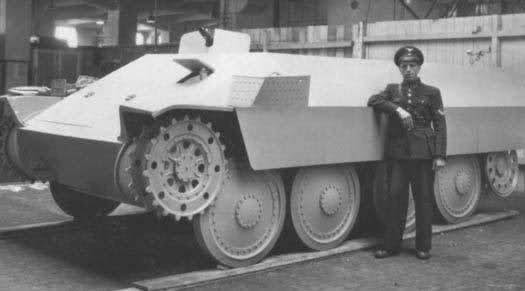
There is also the Auto Union version built on an E series chassis
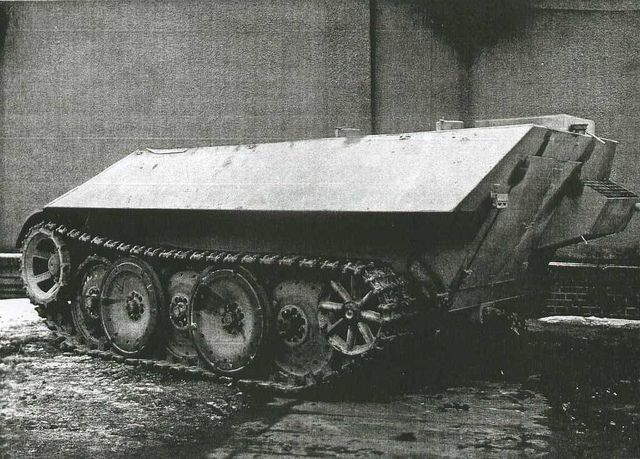
Both were still open topped and designed to carry 8 or 9 men total. They look fairly modern for 1945.
T. A. Gardner
ACCESS: Top Secret
- Joined
- 18 February 2021
- Messages
- 894
- Reaction score
- 1,532
Churchill side doors probably couldn’t be made bigger, but m3 could have been, also a door where the 75 was, appreciate this faces the enemy….But a whole lot less reliable mechanically.I wonder if the Crusader Gun Tractor could have made a viable APC? Delete the ammunition stowage to provide more room for troops and their equipment and it could have proven superior to the various Kangaroos actually deployed.
Try getting a whole infantry squad in full kit through one of them holes tout suite! Might be a bit of a problem. When the Churchill was converted postwar, they still went over the top.Another thought is the what about the M-3 Medium and the Churchill Kangaroos with their side doors?
Really needs someone to have the idea of reversing the tank, so engine first, then you can rebuilt the old front, into big rear doors. Then the Sherman or ram would be great.
T. A. Gardner
ACCESS: Top Secret
- Joined
- 18 February 2021
- Messages
- 894
- Reaction score
- 1,532
Or the Armoured Carrier Wheeled Indian Pattern produced in India, where else, between 1940 & 1944 on imported Canadian chassis. Variety of uses including personnel carrier.
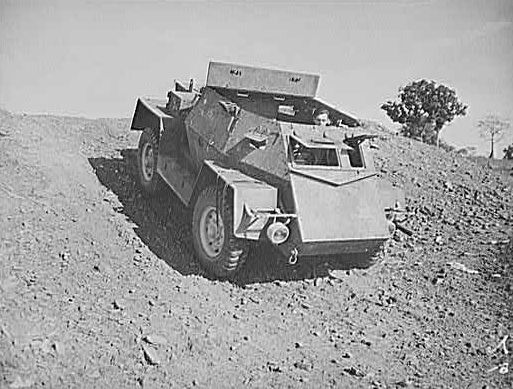
 en.m.wikipedia.org
en.m.wikipedia.org

Armoured Carrier Wheeled Indian Pattern - Wikipedia
- Joined
- 11 March 2012
- Messages
- 3,016
- Reaction score
- 2,699
Th
The Canadian Army also used White Scout Cars and M3 half-tracks, but never had enough to drive significant numbers of infantry into battle. Something like 40 percent of Canadian infantry casualties were caused by mortars and plunging artillery before they got within sight of the Germans.
The C15TA armored ambulance was also used as an APC by Canadian soldiers in Holland during 1945. "Armored ambulance" is a bit of a misnomer as it was never completely armored. yes, the engine and driver were armored (against rifle bullets) but armor only went part way up the sides of the cargo/casualty compartment.This is the Ford S1 scout produced originally for Australia,
View attachment 670633
Some ended up in the USAAF for airfield defense.
Canada produced the C15TA that was used by the Dutch in Asia along with their own forces
View attachment 670634
The Canadian Army also used White Scout Cars and M3 half-tracks, but never had enough to drive significant numbers of infantry into battle. Something like 40 percent of Canadian infantry casualties were caused by mortars and plunging artillery before they got within sight of the Germans.
timmymagic
Forever disappointed in MoD procurement...
- Joined
- 23 August 2011
- Messages
- 1,063
- Reaction score
- 2,824
Never seen the Universal carrier called that before...seriously obsolete
T. A. Gardner
ACCESS: Top Secret
- Joined
- 18 February 2021
- Messages
- 894
- Reaction score
- 1,532
The german Leichter Radschlepper conversion of the french Laffly W15T would be a good exampleI found a few French vehicles that could be called APCs:
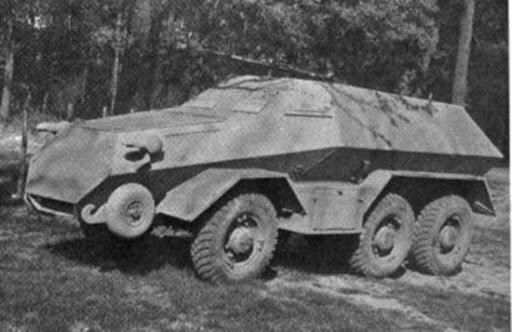
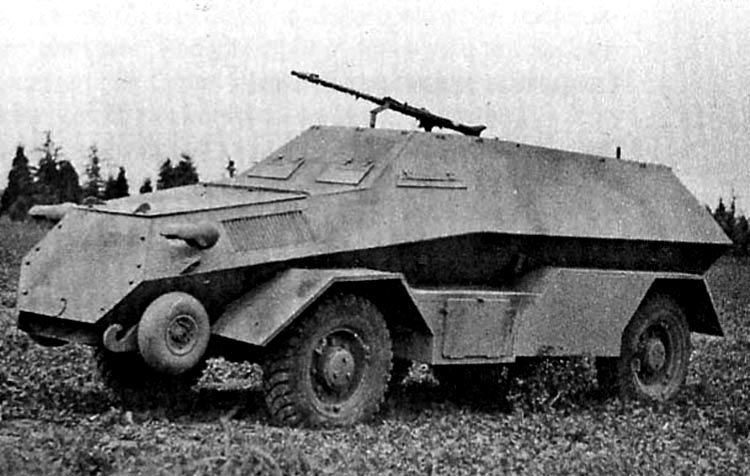
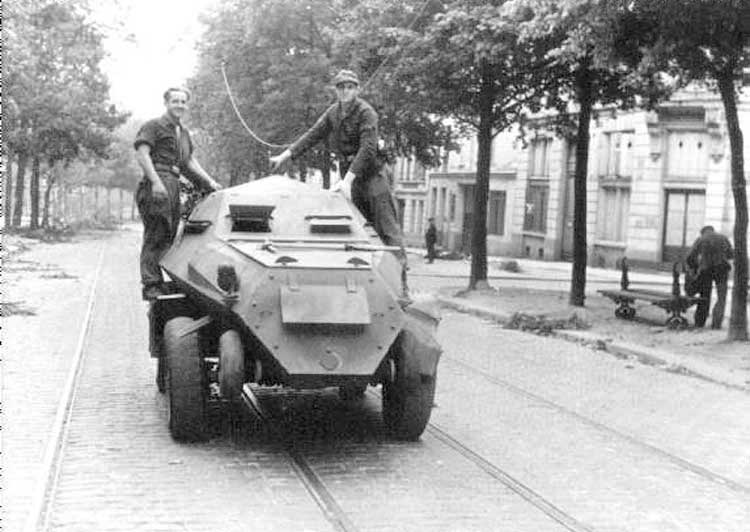
Tho this pic makes you realise just how compact it is
Theres the rather neat little Lorraine 39L apc which just missed out on going into production
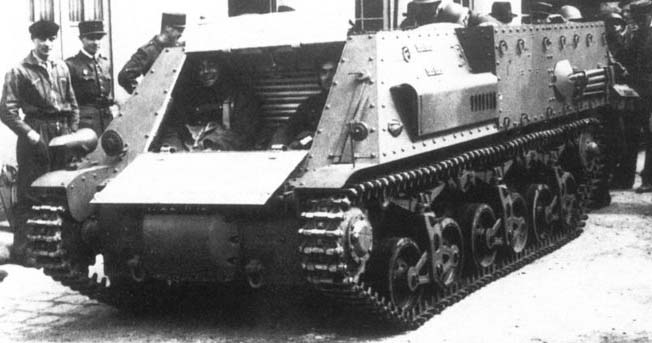
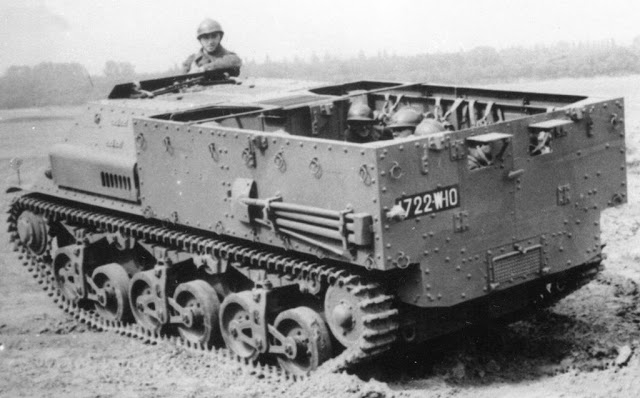
The italians had some interesting stuff as well,such as the SPA Dovunque 35 protetto
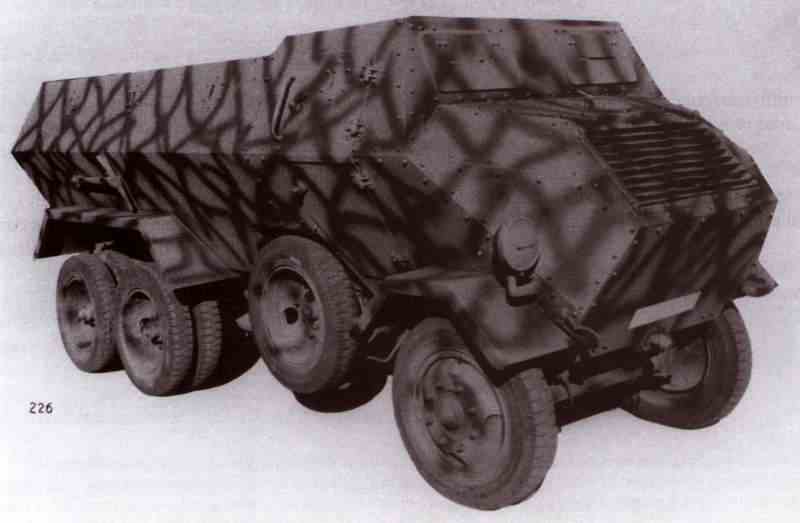
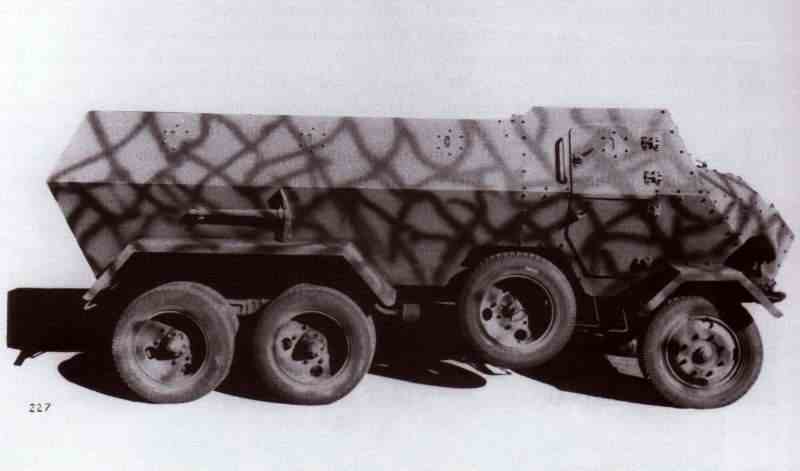
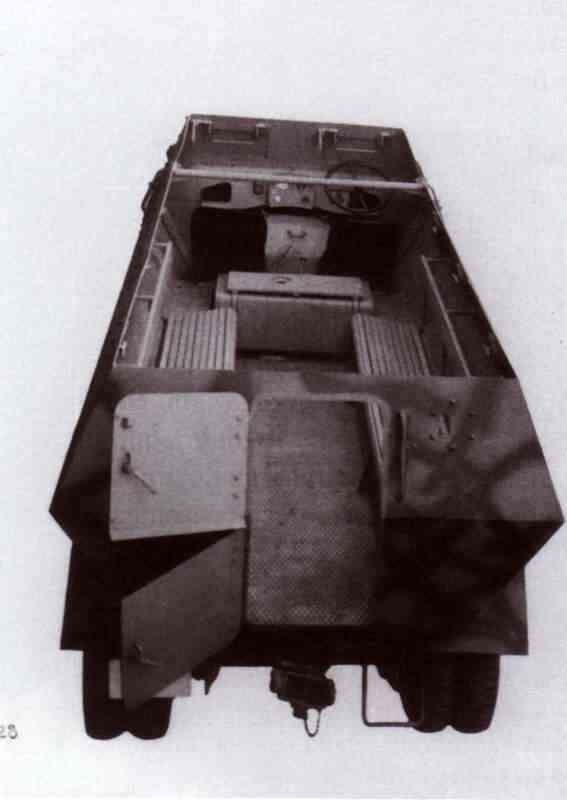
sadly tho only built in very tiny numbers
One that was built in some numbers [by italian standards] was the Fiat 665 Scudatto/Protetto
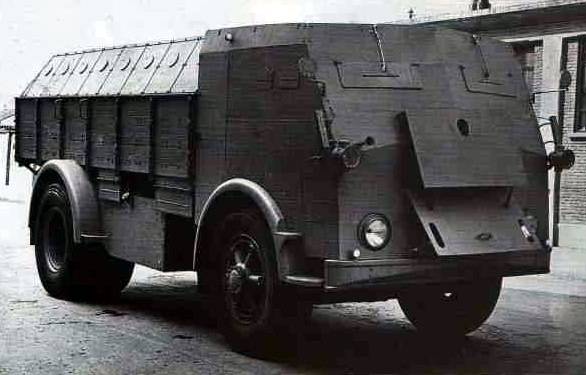
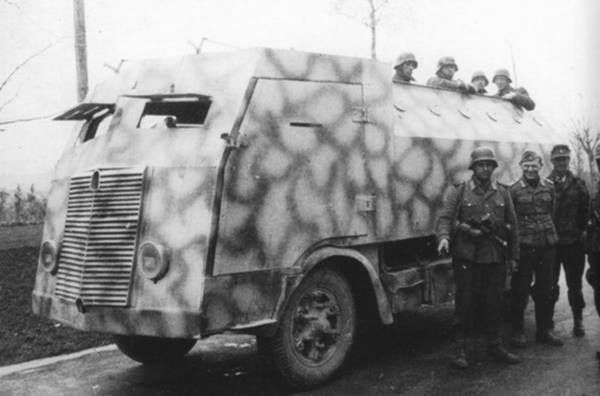
Another italian one was the SPA S37

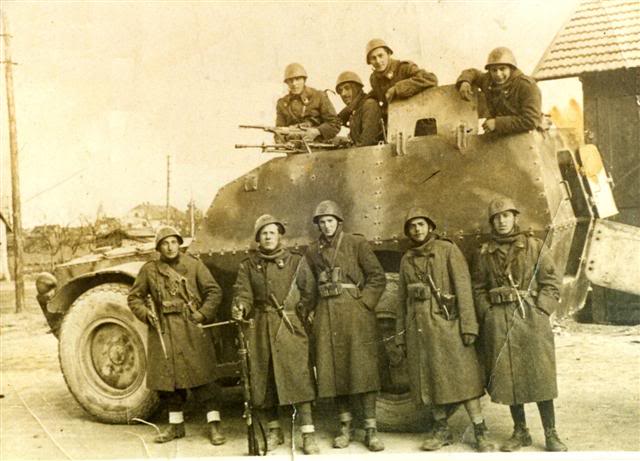
Last edited:
- Joined
- 11 March 2012
- Messages
- 3,016
- Reaction score
- 2,699
This is the Ford S1 scout produced originally for Australia,
View attachment 670633
Some ended up in the USAAF for airfield defense.
Canada produced the C15TA that was used by the Dutch in Asia along with their own forces
View attachment 670634
That Ford S-1 vaguely resembles the Armoured Carrier, Wheeled, Indian Pattern Mark I. The Mark I had a front engine while all later versions had rear engines. They were mounted on Canadian-made CMP truck chassis with Indian-made armoured (e.g. Tata Locomotive factory) hulls. 4,655 were built during WW2, but they only served in India. They looked like enlarged Dingo scout cars, with open tops but with sloped glacis plates more like (post war) Ferrets. All up weight 2.6 long tonnes. The crew compartment was only big enough for 4 or 5 soldiers. They did not match the modern definition of APCs, but were used more like Carden-Lloyd Bren/Universal Carriers for scouting and moving ammo around the battlefield. Typical armament was a pintle-mounted Bren Gun.
T. A. Gardner
ACCESS: Top Secret
- Joined
- 18 February 2021
- Messages
- 894
- Reaction score
- 1,532
There are several variants that were in use:UK's Bren Carrier ?
Must be said it was soon seen as too small, under-powered and seriously obsolete, but I'm told you could 'Clown Car' load it at a pinch...
The actual Bren carrier was only produced very early in the war. There was also a scout model, along with a third carrier type. These were combined into the universal carrier (which still often got called a Bren carrier).
Another variant was the Lloyd carrier used as a gun tractor.
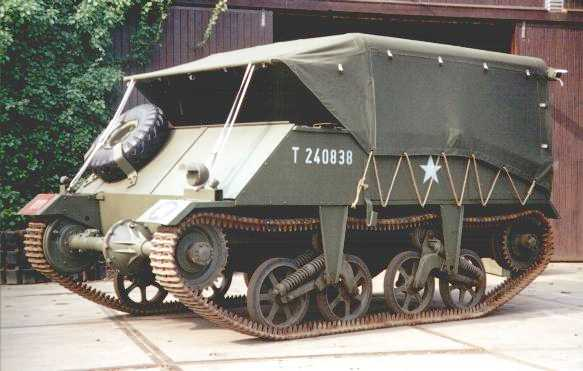
Some early war variants of this sort of included:
The Belgian Vickers utility tractor
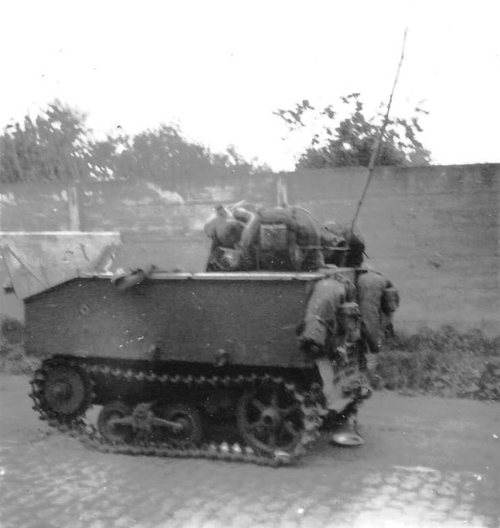
The Russian T20 Kosomolets
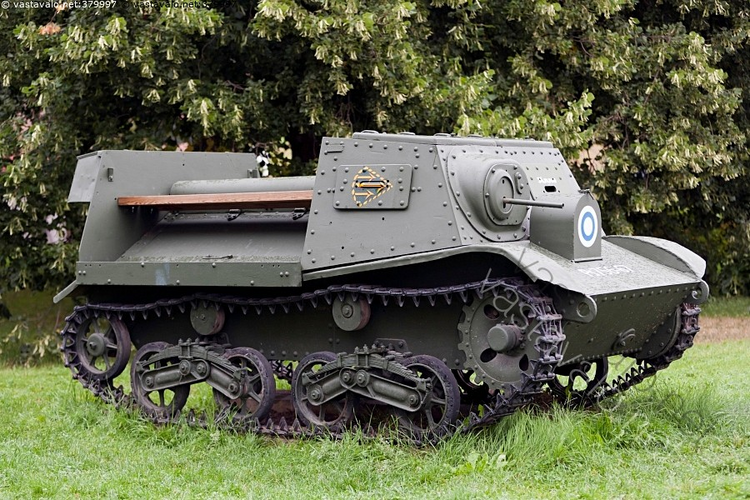
And the French UE tractor
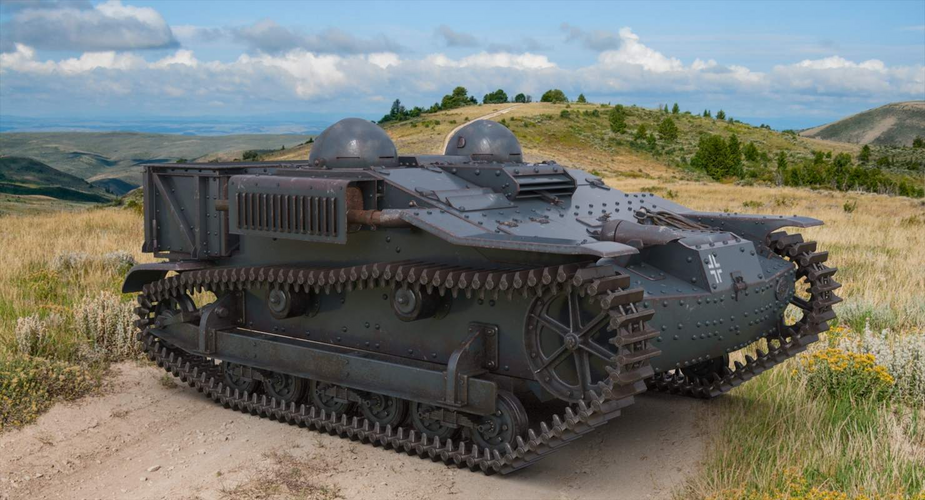
While these are more like artillery tugs than true APC's all but possibly the Lloyd got makeshift conversions that turned them into APC's and even self-propelled gun carriages.
This is an artillery tractor. This is not an armored personnel carrier.The Russian T20 Kosomolets
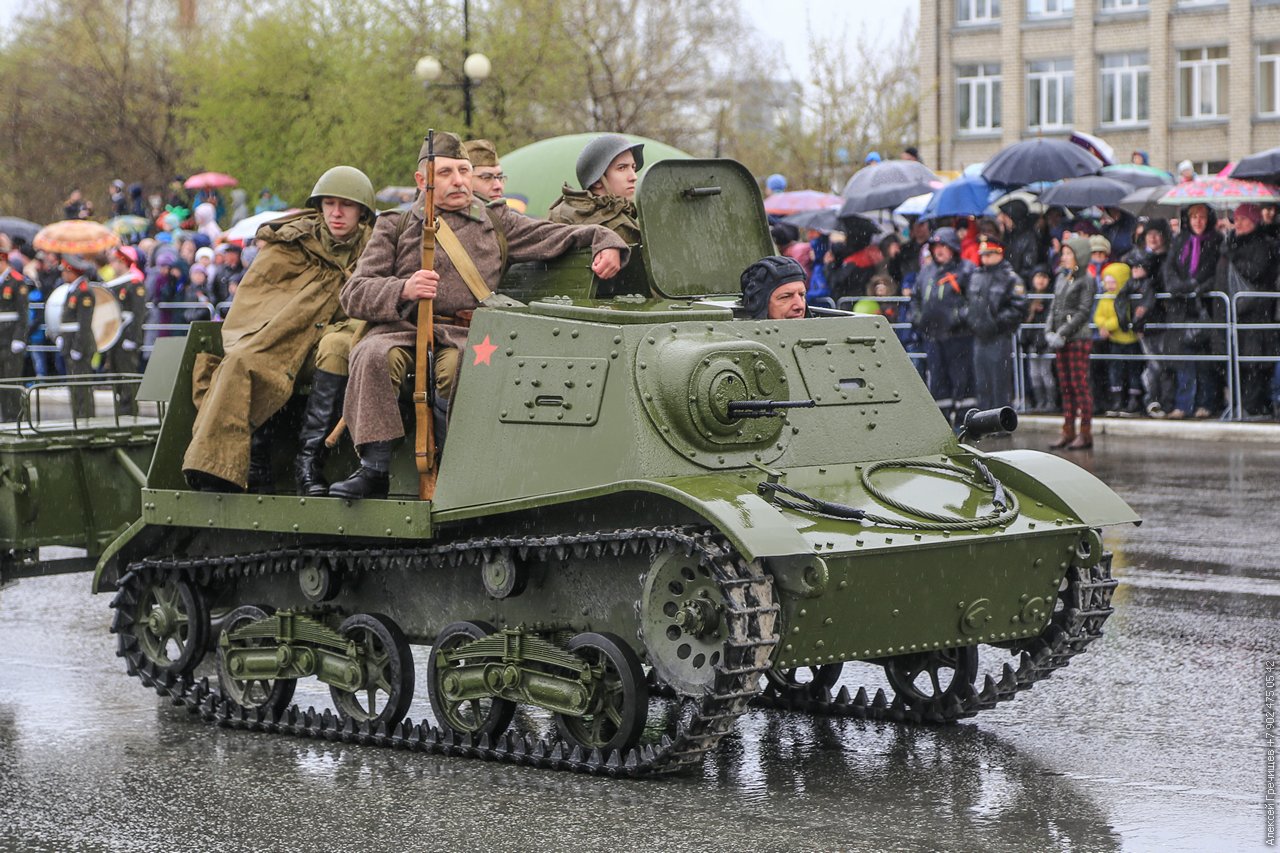
Another one in a similar vein would be the ijn type 4 Ka-TsuThe LVT is yet another APC of specialized use that was built during WW 2
View attachment 670662
The Canadians made good use of these during their 'polder' campaign in Holland late in the war, aside from the USMC's use.
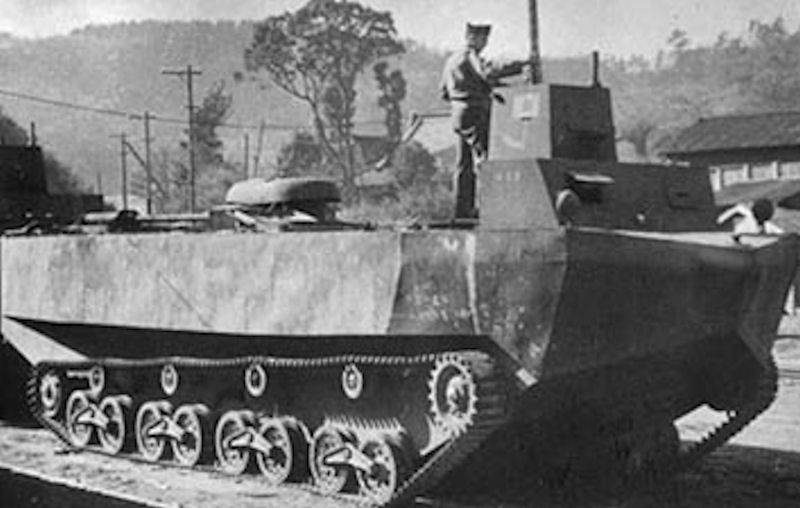
sadly tho by the time it was ready the tactical situation had changed.......
Last edited:
F-2
ACCESS: Top Secret
- Joined
- 22 May 2020
- Messages
- 697
- Reaction score
- 1,219
https://www.tanks-encyclopedia.com/coldwar/US/M44-APC.php what about this guy? Seems a full in apc.
T. A. Gardner
ACCESS: Top Secret
- Joined
- 18 February 2021
- Messages
- 894
- Reaction score
- 1,532
That's the M44. Design was started in November 1944 as the T13, the redesigned some in April 1945 as the T16. It could carry 24 troops. The photo is post WW 2.
tom!
ACCESS: Confidential
Another one in a similar vein would be the ijn type 4 Ka-TsuThe LVT is yet another APC of specialized use that was built during WW 2
View attachment 670662
The Canadians made good use of these during their 'polder' campaign in Holland late in the war, aside from the USMC's use.

sadly tho by the time it was ready the tactical situation had changed.......
Hi.
Again just an armoured cargo/fighting vehicle not developed for soldier transport. There was a similar vehicle with a boat-shaped bow developed by Mitsubishi as amphibious APC but it remains prototype only:
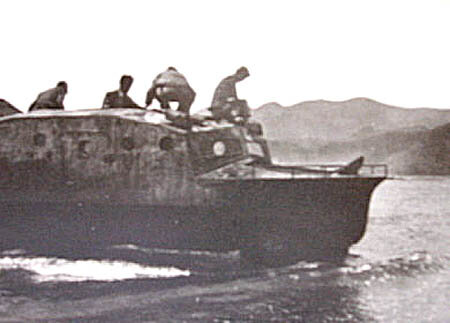
Yours
tom!
World B4
my bad y'all
- Joined
- 25 June 2017
- Messages
- 345
- Reaction score
- 287
There was a German vehicle design from ww2 armed with a 20mm that was basically an ifv.
And in ww1, the British used modified lorries as apcs in Ireland.
Interesting little note, but I heard of an instance when an A7V was unable to depress its guns enough to engage a foxhole, so the crew exited the vehicle and dispatched the enemy with their weapons.
The Marien-wagen, an interesting vehicle previously referenced, is in my opinion worthy of further discussion as an ideological predecessor to the modern Russian vehicles BMO-1 and BMO-T, regarding the use of an apc to deliver infantry with heavy weapons that are dangerous to move across the battlefield. Any other specific examples of this concept?
And in ww1, the British used modified lorries as apcs in Ireland.
Interesting little note, but I heard of an instance when an A7V was unable to depress its guns enough to engage a foxhole, so the crew exited the vehicle and dispatched the enemy with their weapons.
The Marien-wagen, an interesting vehicle previously referenced, is in my opinion worthy of further discussion as an ideological predecessor to the modern Russian vehicles BMO-1 and BMO-T, regarding the use of an apc to deliver infantry with heavy weapons that are dangerous to move across the battlefield. Any other specific examples of this concept?
- Joined
- 3 September 2006
- Messages
- 1,388
- Reaction score
- 1,218
Not quite an APC, but:Any other specific examples of this concept?
Attachments
Similar threads
-
-
-
-
-
South African prototypes, projects, concepts, etc.
- Started by kaiserbill
- Replies: 2K

